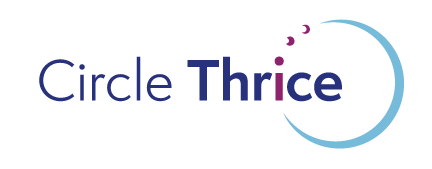Way back in the midst of time and lockdown, I joined the kickstarter/presale for a little project called Fortune’s Fools. This collaboration between Gordon White and Colin Alexander involved a regular podcast centered around the development of a Lenormand fortunetelling deck. The deck made its way to me, after much wending through a choked global supply chain, and I’ve been wanting to review it. Except it’s such a tricksy deck it took me a bit to get to know it.
I’ve been reading cards for a very long time. I started reading with a regular card deck (the only thing I had access to) as a young teen. My first tarot deck, purchased mail order from Circle Sanctuary nearly four decades ago (holy shit!), was the very yellow Waite Smith deck. Since that time, I’ve read with a number of decks, including Waite-style tarot, Marseille, Bavarian Schafkopf, and various new age oracle decks. But in all the time I’d been fooling around with cards, I’d never owned or read with a Lenormand deck. They were all just a little… twee, and lacking in the kind of symbolic resonance that attracted me to the cards to begin with.
But this deck is different. It still focuses on the very practical meaning and purpose of the classical Lenormand deck, but goes into the deep (sometimes prehistorically deep) archetypal symbolism of those cards. Plus the art is awesome, a combination of saucy and symbolic, plus internally consistent across the deck. So how could I not get one?
The deck is wonderfully designed and produced and delivered in a very cool box. In addition, White wrote a full book on cartomancy to go with it. Yes, it functions as the LWB for the deck, but it also has lots of really useful information on reading with any deck (including the regular playing cards I started with).
Every deck has a personality that comes out of both the deck itself (a reflection of its creator) and the reader using the deck. My primary client deck (the Gilded Tarot) is a very old friend (I’ve been reading with it for over two decades now) and it knows me well. It’s proactive and focuses advice on how the querent can get their shit together, avoid blocks, and take right action — so perfect for the work I do with clients. My Spanish Marseille is a narrative deck. It wants to tell stories – gossip even. I have a deck I use exclusively for magic and another that I use for more domestic situations.
Now, being new to the Lenormand, it took me a bit to get the hang of reading with these cards. My first readings I felt like I was, well, getting hustled by the deck might be the best way to put it. It wasn’t telling me anything useful or that I didn’t know. It was challenging me to do better in terms of meaning and questions and approach (talk about reflecting the creator!). So I leaned in and started working to identify the way this deck operates for me.
First, it likes practical questions, but meaningful ones. So none of this “what mindset is best for manifesting this goal?” kind of philosophical stuff that my tarot is so good at. But also, there’d better be something on the line — some meat on the bone. I tried some soft ball questions and it rolled its eyes at me like a bored teenager.
Second, if it has more information to share it sometimes coyly hints at it. For example, I asked what the result would be if my husband and I did a certain thing. The results was Clover, Rider, and Woman. I read this as a lucky adventure… for me. Hint hint. So I went back and specifically asked about my husband and got some additional context specifically for him. That’s the action of a deck that you can build a solid relationship with!
Third, the imagery in the deck is resonant and evocative. In addition to looking good, things ON the cards lean into the readings in really powerful ways. For example, a musician gets the crossroads card, which has an image of a Robert Johnson figure – guitar case in hand getting ready to meet the devil. Or a question about a person’s new living situation includes the serpent — a woman conjuring on the banks of a river — when indeed the location is on a major river. It’s a secondary layer of meaning that helps inform the message and even targets it. This, more than anything, has sold me on this deck as a really useful addition to my collection. It combines the practicality of the playing card fortuneteller with the symbolic resonance of the tarot diviner.
I like the deck better for small spreads (three cards) at this point, but this is more my inexperience with the cards than anything about the deck. Once you get the hang of it, the deck speaks in clear sentences and gives blunt, practical advice. It’s exactly the sort of deck that we need during these chaotic times and the information in the book is very useful no matter how or what you read with.
We’re in the midst of a renaissance in cartomancy right now. So many new decks and so much useful information on reading with them. I’ve gone from being a serial deck monogamist to something of a deck slut, which means I have more decks than I really need of can even use. It’s nice to find something that a) fits perfectly into the environment in which the deck was born b) does its particular job really well, and c) is also of excellent quality. I recommend this deck for new and skilled readers alike and want to particularly call it our for people, like myself, who’ve never experienced the Lenormand before.


